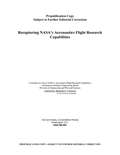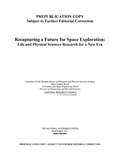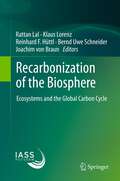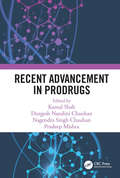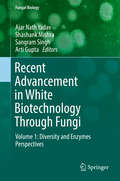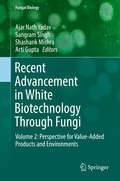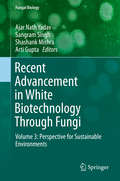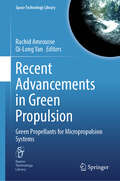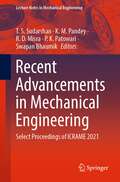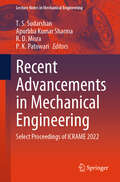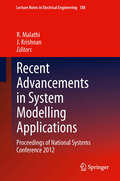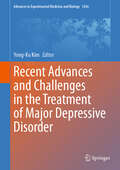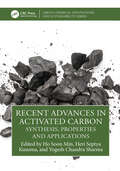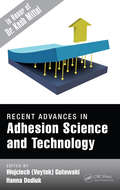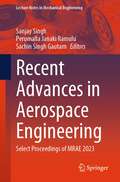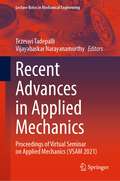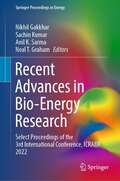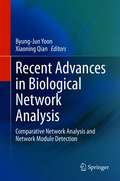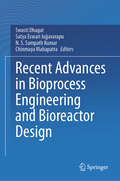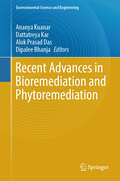- Table View
- List View
Recapturing NASA's Aeronautics Flight Research Capabilities
by Committee to Assess NASA's Aeronautics Flight Research CapabilitiesIn the five decades since NASA was created, the agency has sustained its legacy from the National Advisory Committee on Aeronautics (NACA) in playing a major role in U.S. aeronautics research and has contributed substantially to United States preeminence in civil and military aviation. This preeminence has contributed significantly to the overall economy and balance of trade of the United States through the sales of aircraft throughout the world. NASA's contributions have included advanced flight control systems, de-icing devices, thrust-vectoring systems, wing fuselage drag reduction configurations, aircraft noise reduction, advanced transonic airfoil and winglet designs, and flight systems. Each of these contributions was successfully demonstrated through NASA flight research programs. Equally important, the aircraft industry would not have adopted these and similar advances without NASA flight demonstration on full-scale aircraft flying in an environment identical to that which the aircraft are to operate-in other words, flight research. Flight research is a tool, not a conclusion. It often informs simulation and modeling and wind tunnel testing. Aeronautics research does not follow a linear path from simulation to wind tunnels to flying an aircraft. The loss of flight research capabilities at NASA has therefore hindered the agency's ability to make progress throughout its aeronautics program by removing a primary tool for research. Recapturing NASA's Aeronautics Flight Research Capabilities discusses the motivation for NASA to pursue flight research, addressing the aspects of the committee's task such as identifying the challenges where research program success can be achieved most effectively through flight research. The report contains three case studies chosen to illustrate the state of NASA ARMD. These include the ERA program and the Fundamental Research Program's hypersonics and supersonics projects. Following these case studies, the report describes issues with the NASA ARMD organization and management and offers solutions. In addition, the chapter discusses current impediments to progress, including demonstrating relevancy to stakeholders, leadership, and the lack of focus relative to available resources. Recapturing NASA's Aeronautics Flight Research Capabilities concludes that the type and sophistication of flight research currently being conducted by NASA today is relatively low and that the agency's overall progress in aeronautics is severely constrained by its inability to actually advance its research projects to the flight research stage, a step that is vital to bridging the confidence gap. NASA has spent much effort protecting existing research projects conducted at low levels, but it has not been able to pursue most of these projects to the point where they actually produce anything useful. Without the ability to actually take flight, NASA's aeronautics research cannot progress, cannot make new discoveries, and cannot contribute to U.S. aerospace preeminence. <P> Advisory: Bookshare has learned that this book offers only partial accessibility. We have kept it in the collection because it is useful for some of our members. To explore further access options with us, please contact us through the Book Quality link on the right sidebar. Benetech is actively working on projects to improve accessibility issues such as these.
Recapturing a Future for Space Exploration: Life and Physical Sciences Research for a New Era
by Committee for the Decadal Survey on Biological Physical Sciences in SpaceMore than four decades have passed since a human first set foot on the Moon. Great strides have been made in our understanding of what is required to support an enduring human presence in space, as evidenced by progressively more advanced orbiting human outposts, culminating in the current International Space Station (ISS). However, of the more than 500 humans who have so far ventured into space, most have gone only as far as near-Earth orbit, and none have traveled beyond the orbit of the Moon. Achieving humans' further progress into the solar system had proved far more difficult than imagined in the heady days of the Apollo missions, but the potential rewards remain substantial. During its more than 50-year history, NASA's success in human space exploration has depended on the agency's ability to effectively address a wide range of biomedical, engineering, physical science, and related obstacles--an achievement made possible by NASA's strong and productive commitments to life and physical sciences research for human space exploration, and by its use of human space exploration infrastructures for scientific discovery. The Committee for the Decadal Survey of Biological and Physical Sciences acknowledges the many achievements of NASA, which are all the more remarkable given budgetary challenges and changing directions within the agency. In the past decade, however, a consequence of those challenges has been a life and physical sciences research program that was dramatically reduced in both scale and scope, with the result that the agency is poorly positioned to take full advantage of the scientific opportunities offered by the now fully equipped and staffed ISS laboratory, or to effectively pursue the scientific research needed to support the development of advanced human exploration capabilities. Although its review has left it deeply concerned about the current state of NASA's life and physical sciences research, the Committee for the Decadal Survey on Biological and Physical Sciences in Space is nevertheless convinced that a focused science and engineering program can achieve successes that will bring the space community, the U. S. public, and policymakers to an understanding that we are ready for the next significant phase of human space exploration. The goal of this report is to lay out steps and develop a forward-looking portfolio of research that will provide the basis for recapturing the excitement and value of human spaceflight--thereby enabling the U. S. space program to deliver on new exploration initiatives that serve the nation, excite the public, and place the United States again at the forefront of space exploration for the global good.
Recarbonization of the Biosphere
by Klaus Lorenz Rattan Lal Joachim Von Braun Reinhard F. Hüttl Bernd Uwe SchneiderHuman activities are significantly modifying the natural global carbon (C) cycles, and concomitantly influence climate, ecosystems, and state and function of the Earth system. Ever increasing amounts of carbon dioxide (CO2) are added to the atmosphere by fossil fuel combustion but the biosphere is a potential C sink. Thus, a comprehensive understanding of C cycling in the biosphere is crucial for identifying and managing biospheric C sinks. Ecosystems with large C stocks which must be protected and sustainably managed are wetlands, peatlands, tropical rainforests, tropical savannas, grasslands, degraded/desertified lands, agricultural lands, and urban lands. However, land-based sinks require long-term management and a protection strategy because C stocks grow with a progressive improvement in ecosystem health.
Recent Advancement in Prodrugs
by Durgesh Nandini Chauhan Nagendra Singh Chauhan Kamal Shah Pradeep MishraRecent Advancement in Prodrugs Drugs used as medicines have many limitations like low chemical stability, aqueous solubility, or oral absorption/bioavailability, rapid presystemic metabolism, toxicity, inadequate site specificity, or poor patient acceptance/compliance (unwanted adverse effects, unacceptable taste or odor, irritation or pain). Prodrugs design is an approach to overcome these limitations. Key features Covers recent advancements in development of prodrugs Presents balanced synthesis and applications of prodrug chemistry Discusses broad spectrum of prodrug categories and outlines industrial applications Reviews prodrugs in cancer nanomedicine, its therapy and treatment Elucidates mathematical models to study the kinetics of prodrugs This book covers recent advances in the design of prodrugs. It contains all the significant recent examples of prodrug chemistry developments and will aid academics and researchers seeking to generate new projects in the field.
Recent Advancement in White Biotechnology Through Fungi: Volume 1: Diversity and Enzymes Perspectives (Fungal Biology)
by Ajar Nath Yadav Shashank Mishra Sangram Singh Arti GuptaWhite biotechnology, or industrial biotechnology as it is also known, refers to the use of living cells and/or their enzymes to create industrial products that are more easily degradable, require less energy, create less waste during production and sometimes perform better than products created using traditional chemical processes.Over the last decade considerable progress has been made in white biotechnology research, and further major scientific and technological breakthroughs are expected in the future. Fungi are ubiquitous in nature and have been sorted out from different habitats, including extreme environments (high temperature, low temperature, salinity and pH), and may be associated with plants (epiphytic, endophytic and rhizospheric).The fungal strains are beneficial as well as harmful for human beings. The beneficial fungal strains may play important roles in the agricultural, industrial, and medical sectors. The fungal strains and their products (enzymes, bioactive compounds, and secondary metabolites) are very useful for industry (e.g., the discovery of penicillin from Penicillium chrysogenum). This discovery was a milestone in the development of white biotechnology as the industrial production of penicillin and antibiotics using fungi moved industrial biotechnology into the modern era, transforming it into a global industrial technology. Since then, white biotechnology has steadily developed and now plays a key role in several industrial sectors, providing both high value nutraceutical and pharmaceutical products. The fungal strains and bioactive compounds also play an important role in environmental cleaning. This volume covers the latest developments and research in white biotechnology with a focus on diversity and enzymes.
Recent Advancement in White Biotechnology Through Fungi: Volume 2: Perspective for Value-Added Products and Environments (Fungal Biology)
by Ajar Nath Yadav Shashank Mishra Sangram Singh Arti GuptaWhite biotechnology is industrial biotechnology dealing with various biotech products through applications of microbes. The main application of white biotechnology is commercial production of various useful organic substances, such as acetic acid, citric acid, acetone, glycerine, etc., and antibiotics like penicillin, streptomycin, mitomycin, etc., and value added product through the use of microorganisms especially fungi and bacteria. The value-added products included bioactive compounds, secondary metabolites, pigments and industrially important enzymes for potential applications in agriculture, pharmaceuticals, medicine and allied sectors for human welfare. In the 21st century, techniques were developed to harness fungi to protect human health (through antibiotics, antimicrobial, immunosuppressive agents, value-added products etc.), which led to industrial scale production of enzymes, alkaloids, detergents, acids, biosurfactants. The first large-scale industrial applications of modern biotechnology have been made in the areas of food and animal feed production (agricultural/green biotechnology) and pharmaceuticals (medical/red biotechnology). In contrast, the production of bio-active compounds through fermentation or enzymatic conversion is known industrial or white biotechnology. The beneficial fungal strains may play important role in agriculture, industry and the medical sectors. The beneficial fungi play a significance role in plant growth promotion, and soil fertility using both, direct (solubilization of phosphorus, potassium and zinc; production of indole acetic acid, gibberellic acid, cytokinin and siderophores) and indirect (production of hydrolytic enzymes, siderophores, ammonia, hydrogen cyanides and antibiotics) mechanisms of plant growth promotion for sustainable agriculture. The fungal strains and their products (enzymes, bio-active compounds and secondary metabolites) are very useful for industry. The discovery of antibiotics is a milestone in the development of white biotechnology. Since then, white biotechnology has steadily developed and now plays a key role in several industrial sectors, providing both high valued nutraceuticals and pharmaceutical products. The fungal strains and bio-active compounds also play important role in the environmental cleaning. This volume covers the latest research developments related to value-added products in white biotechnology through fungi.
Recent Advancement in White Biotechnology Through Fungi: Volume 3: Perspective for Sustainable Environments (Fungal Biology)
by Ajar Nath Yadav Shashank Mishra Sangram Singh Arti GuptaOver the last decade considerable progress has been made in white biotechnology research and further major scientific and technological breakthroughs are expected in the future. The first large-scale industrial applications of modern biotechnology have been in the areas of food and animal feed production (agricultural/green biotechnology) and in pharmaceuticals (medical/red biotechnology). In contrast, the productions of bioactive compounds through fermentation or enzymatic conversion are known as industrial or white biotchnology. The fungi are ubiquitous in nature and have been sorted out from different habitats, including extreme environments (high temperature, low temperature, salinity and pH); and associated with plants (Epiphytic, Endophytic and Rhizospheric). The fungal strains are beneficial as well as harmful for human beings. The beneficial fungal strains may play important roles in the agricultural, industrial, and medical sectors. The fungal strains and its product (enzymes, bioactive compounds, and secondary metabolites) are very useful for industry (e.g., the discovery of penicillin from Penicillium chrysogenum). This discovery was a milestone in the development of white biotechnology as the industrial production of penicillin and antibiotics using fungi moved industrial biotechnology into the modern era, transforming it into a global industrial technology. Since then, white biotechnology has steadily developed and now plays a key role in several industrial sectors providing both high value nutraceutical and pharmaceutical products. The fungal strains and bioactive compounds also play an important role in environmental cleaning. This volume covers the latest research developments related to value-added products in white biotechnology through fungi.
Recent Advancements in Gene Expression and Enabling Technologies in Crop Plants
by Michael R. Davey Kasi Azhakanandam Aron Silverstone Henry DaniellIn this book, authors who are experts in their fields describe current advances on commercial crops and key enabling technologies that will underpin future advances in biotechnology. They discuss state of the art discoveries as well as future challenges. Tremendous progress has been made in introducing novel genes and traits into plant genomes since the first creation of transgenic plants thirty years ago, and the first commercialization of genetically modified maize in 1996. Consequently, cultivation of biotech crops with useful traits has increased more than 100-fold from 1. 7 million hectares in 1996 to over 175 million hectares globally in 2013. This achievement has been made possible by continued advances in understanding the basic molecular biology of regulatory sequences to modulate gene expression, enhancement of protein synthesis and new technologies for transformation of crop plants. This book has three sections that encompass knowledge on genetically modified (GM) food crops that are currently used by consumers, those that are anticipated to reach the market place in the near future and enabling technologies that will facilitate the development of next generation GM crops. Section I focuses only on genetically modified maize and soybean (3 chapters each), while Section II discusses the GM food crops rice, wheat, sorghum, vegetables and sugar cane. Section III covers exciting recent developments in several novel enabling technologies, including gene targeting, minichromosomes, and in planta transient expression systems.
Recent Advancements in Green Propulsion: Green Propellants for Micropropulsion Systems (Space Technology Library #44)
by Rachid Amrousse Qi-Long YanThis book introduces recent developments in green propellants and green propulsion systems by various worldwide research groups. Various space agencies across the globe have accelerated the development of non-toxic green propellants, and the European Union is planning to phase out hydrazine (liquid) and ammonium perchlorate (solid) as propellants in the future, as it was identified as a substance of high concern by the REACh regulation.Although the process is still ongoing, it has triggered the development of attractive new propellants and technologies for the market, fostering research for non-toxic, high-performance alternative technologies. Several green propellants and green propulsion systems have been developed, tested, and even commercialized, such as ADN- or HAN-based propulsion, hydrogen peroxide propulsion, and water propulsion technology, where water is electrolyzed in orbit to O2 and H2, then combusted for the generation of thrust. This book describes proposed solutions to replace hydrazine, its derivatives and ammonium perchlorate with green propellants, discusses recent progress in environmentally friendly propellant systems and covers recent advancements on materials, catalysts and oxidizers for green solid rocket propellants. It aims to provide necessary technical information for space mission and propulsion systems' designers and researchers in this aerospace field.
Recent Advancements in Mechanical Engineering: Select Proceedings of ICRAME 2021 (Lecture Notes in Mechanical Engineering)
by T. S. Sudarshan K. M. Pandey R. D. Misra P. K. Patowari Swapan BhaumikThis book presents select proceedings of the 2nd International Conference on Recent Advancements of Mechanical Engineering (ICRAME 2021), which was held during 7th to 9th February 2021 at National Institute of Technology Silchar. The book entails the recent developments in a range of areas related to mechanical engineering. It examines the state-of-the-art researches in the areas of thermal engineering, engineering design, manufacturing/ production engineering and surface engineering. Various topics covered include advanced energy sources, bio-thermal applications, techniques in fluid flow, computing in applied mechanics and product design, dynamics and control of structures/ systems, fracture and failure mechanics, solid mechanics, casting, welding, brazing, soldering, JIT, MRP, supply chain management and logistics. The book will be useful for researchers and professionals working in the areas of mechanical engineering.
Recent Advancements in Mechanical Engineering: Select Proceedings of ICRAME 2022 (Lecture Notes in Mechanical Engineering)
by T. S. Sudarshan R. D. Misra P. K. Patowari Apurbba Kumar SharmaThis book presents the select proceedings of the 3rd International Conference on Recent Advancements of Mechanical Engineering (ICRAME 2022), which was held during 4th to 6th February 2021 at National Institute of Technology Silchar. The book entails the recent developments in different fields of mechanical engineering. The topics covered in this book include thermal engineering, design engineering, production and industrial engineering and surface engineering. The book will be useful for researchers and professionals working in the various fields of mechanical engineering.
Recent Advancements in Polymeric Materials for Electrochemical Energy Storage (Green Energy and Technology)
by Ram K. GuptaThis book covers the current, state-of-the-art knowledge, fundamental mechanisms, design strategies, and future challenges in electrochemical energy storage devices using polymeric materials. It looks into the fundamentals and working principles of electrochemical energy devices such as supercapacitors and batteries and explores new approaches for the synthesis of polymeric materials and their composites to broaden the vision for researchers to explore advanced materials for electrochemical energy applications. All the chapters are written by leading experts in these areas making it suitable as a reference for students as well as provide new directions to researchers and scientists working in polymers, energy, and nanotechnology.
Recent Advancements in System Modelling Applications
by J Krishnan R MalathiThe book is a collection of peer-reviewed scientific papers submitted by active researchers in the 36th National System Conference (NSC 2012). NSC is an annual event of the Systems Society of India (SSI), primarily oriented to strengthen the systems movement and its applications for the welfare of humanity. A galaxy of academicians, professionals, scientists, statesman and researchers from different parts of the country and abroad are invited to attend the Conference. The book presents various research articles in the area of system modelling in all disciplines of engineering sciences as well as socio-economic systems. The book can be used as a tool for further research.
Recent Advancements in the Diagnosis of Human Disease
by Irshad M. SulaimanViruses, bacteria, fungi and parasites are known to cause the most common human disease. It frequently spreads through direct contact (from human to human, animal to human), and through contaminated food or water. With the advancement of diagnostic techniques, it is now possible to rapidly identify microorganisms causing human disease and correlate with the corresponding clinical infection. Therefore, there is a need to develop robust and high-throughput diagnostic methods to prevent and control human disease of public health importance. This book entitled “Recent Advancements in the Diagnosis of Human Disease” will help the scientific community to better understand the transmission dynamics of some human diseases.
Recent Advances and Challenges in the Treatment of Major Depressive Disorder (Advances in Experimental Medicine and Biology #1456)
by Yong-Ku KimThis book reviews all aspects of major depressive disorder (MDD), casting light on its neurobiological underpinnings and describing the most recent advances in management. The book is divided into four sections, the first of which discusses MDD from a network science perspective, highlighting the alterations in functional and structural connectivity and presenting insights achieved through resting state functional MRI and the development of neuroimaging-based biomarkers. The second section examines important diagnostic and neurobiological issues, while the third considers the currently available specific treatments for MDD, including biofeedback, neurofeedback, cognitive behavioral therapy, acceptance and commitment therapy, neuromodulation therapy, psychodynamic therapy, and complementary and alternative medicine. A concluding section is devoted to promising emerging treatments, from novel psychopharmacological therapies through to virtual reality treatment, immunotherapy, biomarker-guided tailored therapy, and more. Written by leading experts from across the world, the book will be an excellent source of information for both researchers and practitioners.
Recent Advances in Activated Carbon: Synthesis, Properties and Applications (Green Chemical Innovations and Sustainability)
by Ho Soon Min Heri Septya Kusuma Yogesh Chandra SharmaThe world’s activated carbon market volume has increased rapidly in recent years due to environmental regulations. It is being used in a variety of fields including water treatment, air purification, and food processing. This volume in the Green Chemical Innovations and Sustainability Series studies the physical, biological, and chemical modification of activated carbon to enhance the adsorption performance. Recent experimental results indicating improved adsorption capacity are presented as well as novel applications using activated carbon. The authors focus on identifying potential precursors from agricultural waste, municipal waste, and industrial waste and investigate toxic pollutants.Features Demonstrates how researchers can produce synthetic adsorbents (activated carbon) via agricultural waste, industrial waste, and household waste. Describes the actions of adsorption capacity or percentage removal with respect to factors affecting the adsorption process. Investigates activated carbon's removal efficiency of dyes, organic compounds, pharmaceutically active compounds, heavy metals, pesticides, fungicides, herbicides, antibiotics, and other toxic pollutants Discusses the search for low-cost adsorbents that can be produced by using agricultural wastes, industrial wastes, and natural materials.
Recent Advances in Adhesion Science and Technology in Honor of Dr. Kash Mittal
by Hanna Dodiuk Wojciech Voytek GutowskiThe surface of an object is the first thing we see or touch. Nearly every article or object we encounter at home, in industry, land transportation, aerospace, or the medical field in some way uses an adhesive, a sealant, or a decorative coating. Adhesion science provides the technology and the know-how behind these applications. Recent Advances in
Recent Advances in Aerospace Engineering: Select Proceedings of MRAE 2023 (Lecture Notes in Mechanical Engineering)
by Sanjay Singh Sachin Singh Gautam Perumalla Janaki RamuluThe book presents the select proceedings of 2nd International Conference on Modern Research in Aerospace Engineering (MRAE 2023). It covers the latest research in the field of aerospace engineering and space technology. Various topics covered in this book are aerospace propulsion; space research; avionics and instrumentation; aerodynamics, wind tunnel and computational fluid dynamics; structural analysis and finite element method; aerospace materials and manufacturing system; air safety and airworthiness; aircraft control system and stability; aircraft maintenance, overhauling, NDT and other technical tests; autonomous airborne systems; airborne defence systems; AI and ML applications in aerospace engineering; unmanned aerial vehicles and flight mechanics. The book will be useful for researchers and professionals in aerospace engineering and space science and technology.
Recent Advances in Animal Nutrition and Metabolism (Advances in Experimental Medicine and Biology #1354)
by Guoyao WuThis book covers hot topics in the nutrition and metabolism of terrestrial and aquatic animals, including the interorgan transport and utilization of water, minerals, amino acids, glucose, and fructose; the development of alternatives to in-feed antibiotics for animals (e.g., swine and poultry); and metabolic disorders (or diseases) resulting from nutrient deficiencies. It enables readers to understand the crucial roles of nutrients in the nutrition, growth, development, and health of animals. Such knowledge has important implications for humans. Readers will also learn from well-written chapters about the use of new genome-editing biotechnologies to generate animals (e.g., cows and swine) as bioreactors that can produce large amounts of pharmaceutical proteins and other molecules to improve the health and well-being of humans and other animals, as well as the growth and productivity of farm animals. Furthermore, the book provides useful information on the use of animals (e.g., cattle, swine, sheep, chickens, and fish) as models in biomedical research to prevent and treat human diseases, develop infant formulas, and improve the cardiovascular and metabolic health of offspring with prenatal growth restriction. Editor of this book is an internationally recognized expert in nutrition and metabolisms. He has about 40 years of experience with research and teaching at world-class universities in the subject matters. He has published more than 660 papers in peer-reviewed journals, 90 chapters in books, and authored two text/reference books, with a very high H-index of 127 and more than 66,000 citations in Google Scholar. This publication is a useful reference for nutrition and biomedical professionals, as well as undergraduate and graduate students in animal science, aquaculture, zoology, wildlife, veterinary medicine, biology, biochemistry, food science, nutrition, pharmacology, physiology, toxicology, and other related disciplines. In addition, all chapters provide general and specific references to nutrition and metabolism for researchers and practitioners in animal agriculture (including aquaculture), dietitians, animal and human medicines, and for government policy makers.
Recent Advances in Applied Mathematics and Applications to the Dynamics of Fluid Flows: 5th International Conference on Applications of Fluid Dynamics (ICAFD) 2020 (Lecture Notes in Mechanical Engineering)
by J. Prakash Suripeddi Srinivas Badeti SatyanarayanaThis book presents select proceedings of the 5th International Conference on Applications of Fluid Dynamics (ICAFD 2020) organized by the School of Mechanical Engineering Science, VIT-AP University, India, in association with the University of Johannesburg, Auckland Park Kingsway Campus, South Africa. It identifies the existing challenges in the area of applied mathematics and mechanics (of solids and fluids) and emphasizes the importance of establishing new methods and algorithms to address these challenges. The topics covered include diverse applications of fluid dynamics in aerospace dynamics and propulsion, atmospheric sciences, compressible flow, environmental fluid dynamics, control structures, viscoelasticity and mechanics of composites. Given the contents, the book will be a useful resource for researchers as well as practitioners working in the area of mechanical engineering and applied mathematics.
Recent Advances in Applied Mechanics: Proceedings of Virtual Seminar on Applied Mechanics (VSAM 2021) (Lecture Notes in Mechanical Engineering)
by Tezeswi Tadepalli Vijayabaskar NarayanamurthyThis book comprises the proceedings of the Virtual Seminar on Applied Mechanics 2021 organized by the Indian Society for Applied Mechanics. The contents of this volume focus on solid mechanics, fluid mechanics, biomechanics/biomedical engineering, materials science and design engineering. The authors are experienced practitioners and the chapters encompass up-to-date research in the field of applied mechanics. This book will appeal to researchers and scholars across the broad spectrum of engineering involving the application of mechanics in civil, mechanical, aerospace, automobile, bio-medical, material science, and more.
Recent Advances in Bio-Energy Research: Select Proceedings of the 3rd International Conference, ICRABR 2022 (Springer Proceedings in Energy)
by Sachin Kumar Nikhil Gakkhar Anil K. Sarma Neal T. GrahamThis book comprises select proceedings of the 3rd International Conference on Recent Advances in Bio-energy Research (ICRABR 2022), providing comprehensive coverage on bio-energy-related fields and prospects of bio-energy in terms of waste management for energy generation, storage, and application. The content includes themes such as optimisation of energy systems, recent advances in biofuels and bioenergy, biomass hybrid systems, energy efficiency, electrochemical conversion of biofuels to renewable energy, energy management and policy, and the inter-linkages between energy and sustainable development. This book is of use to academics, researchers, consultants, and policymakers alike.
Recent Advances in Biological Network Analysis: Comparative Network Analysis and Network Module Detection
by Byung-Jun Yoon Xiaoning QianThis book reviews recent advances in the emerging field of computational network biology with special emphasis on comparative network analysis and network module detection. The chapters in this volume are contributed by leading international researchers in computational network biology and offer in-depth insight on the latest techniques in network alignment, network clustering, and network module detection. Chapters discuss the advantages of the respective techniques and present the current challenges and open problems in the field. Recent Advances in Biological Network Analysis: Comparative Network Analysis and Network Module Detection will serve as a great resource for graduate students, academics, and researchers who are currently working in areas relevant to computational network biology or wish to learn more about the field. Data scientists whose work involves the analysis of graphs, networks, and other types of data with topological structure or relations can also benefit from the book's insights.
Recent Advances in Bioprocess Engineering and Bioreactor Design
by Swasti Dhagat Satya Eswari Jujjavarapu N. S. Sampath Kumar Chinmaya MahapatraThis book provides insights into the recent developments in the field of bioprocess technology and bioreactor design. Bioprocess engineering or biochemical engineering is a subcomponent of chemical engineering, which encompasses designing and developing those processes and equipment that are required for the manufacturing of products from biological materials and sources, such as agriculture, pharmaceutical, chemicals, polymers, food, etc., or for the treatment of environmental process, for example, waste water. The main focus of this book is to highlight the advancements in the field of bioprocess technology and bioreactor design. The book is divided into various chapters briefing all aspects of bioprocess engineering and focusing on the advances in bioprocess engineering. The book summarizes introduction to bioprocess technology and microbiology, isolation and maintenance of microbial strains, and sterilization techniques for advanced-level students and researchers. Different models depicting kinetics of microbial growth, substrate consumption, and product formation are discussed. The applications of enzymes have increased tremendously and therefore understanding their metabolic pathways to increase yields is also briefly discussed. The calculations of mass and energy balances associated with entropy changes and free energy. This book also covers the approaches for handling different types of cell cultures and current advancements in the area of bioprocess strategies for different culture types, which scientists and researchers working in the different cell cultures can refer to. The downstream processing of various industrially important products is also a part of this book. Apart from that, the process economics which ensures the feasibility and quality of any biological process is also dealt with as the last section of the book.
Recent Advances in Bioremediation and Phytoremediation (Environmental Science and Engineering)
by Alok Prasad Das Dipalee Bhanja Ananya Kuanar Dattatreya KarThis book focuses on a number of recently created and successfully used bio/phytoremediation technologies for pollution reduction and control that were not given more thorough discussion in earlier works. The earth's crust contains heavy metals naturally as one of its constituents. The main cause of the discharge of harmful metals into the soil and aquatic habitats, aside from natural sources, is man-made activity, particularly industrialization. As a result of various human activities, excessive amounts of heavy metals—including chromium, arsenic, lead, mercury, copper, and zinc—are released into the environment. These metals eventually contaminate agricultural soils and water bodies and have a negative effect on the ecosystem. Additionally, even at very low concentrations, heavy metal poses a dangerous threat to both humans and animals due to its tremendous toxicity. Appropriate remediation technology is needed to address the problems caused by toxic heavy metal contamination. The technology should be affordable, eco-friendly, and provide long-term solutions. Such required properties are offered by biological remediation approaches, such as microbial and phytoremediation, for the treatment of heavy metal contamination. The discussion of biological remediation technologies as a sustainable method involves several techniques involved in the removal of harmful heavy metals.
